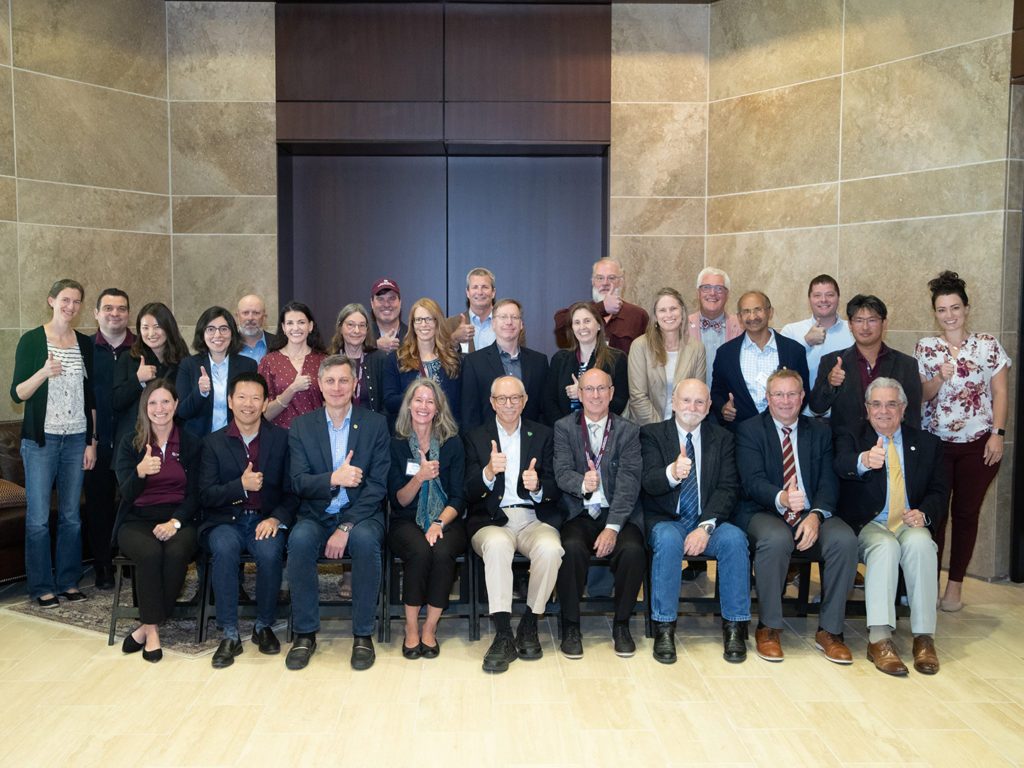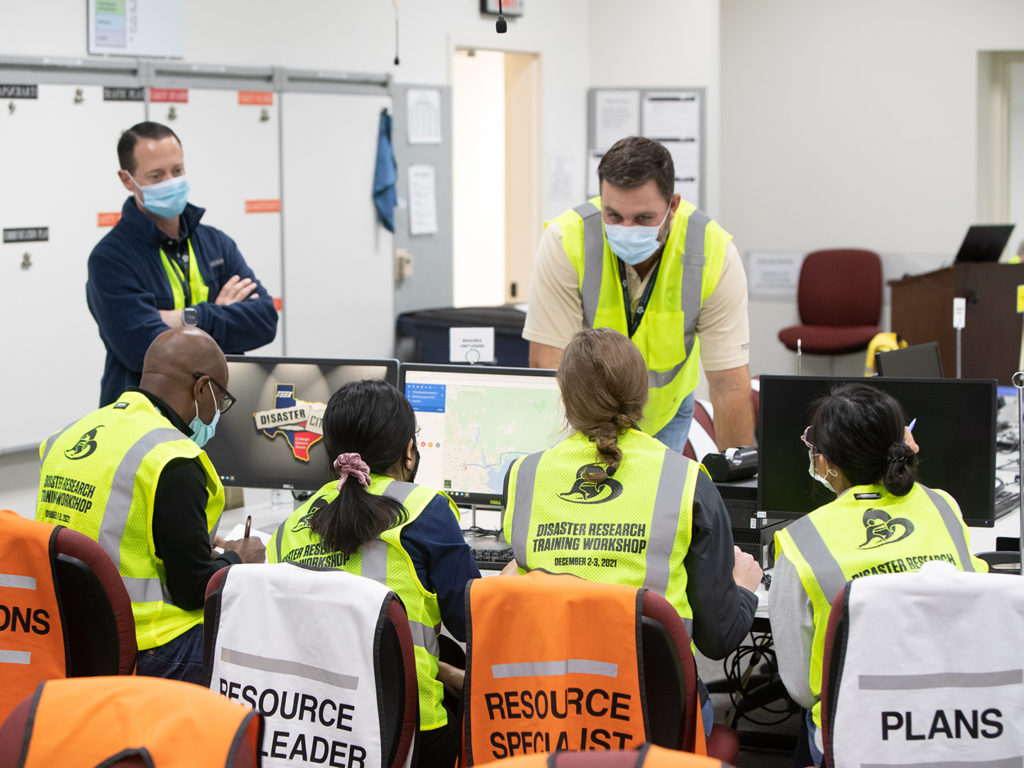Texas A&M Superfund Center Receives NIH Funding Renewal To Continue Research on Climate Change, Health
Story by Megan Myers, VMBS Communications

The Texas A&M University Superfund Research Center, housed within the School of Veterinary Medicine & Biomedical Sciences (VMBS), has received a five-year renewal of its funding from the National Institute of Environmental Health Sciences (NIEHS), one of the National Institutes of Health (NIH).
Since its launch in 2017, the Superfund Center has focused on understanding and mitigating the health and environmental consequences of exposure to hazardous chemical mixtures following disaster events. It is one of 22 university-based, multi-project centers within the NIEHS’ Superfund Research Program.
In the next five years, the center will use a series of multi-disciplinary projects to expand upon its findings, begin new studies, and continue developing practical tools to keep the United States’ and Texas’ communities safe from climate change-related disaster events.
Putting Science Into Practice
The NIH’s initial approximate $10 million grant awarded to Dr. Ivan Rusyn, Superfund Center director and a University Professor of toxicology, five years ago has supported the center’s initiatives in the areas of disaster research response (DR2), climate change, and health.
“The center’s biggest accomplishments have included establishing its nationally and internationally recognized research capacity and the group of investigators that we have, as well as demonstrating how the science at Texas A&M can be translated to solutions in disaster research and response that assist impacted communities and build resilience to future climate change-related disasters,” Rusyn said.
Superfund Center researchers have conducted sampling after several environmental emergencies—including Hurricane Harvey, Hurricane Florence, and the Intercontinental Terminals Company (ITC) Deer Park Fire—and have co-authored more than 250 peer-reviewed publications on their work during the first five years of funding.
The center has also hosted a large number of community outreach events on emergency preparedness; developed new reporting tools for environmental and health data; trained staff and students in disaster response; and played a role in increasing local COVID-19 vaccination rates.
Although the pandemic presented an unexpected challenge for the center, it also provided new opportunities for engaging and strengthening relationships with partner communities.

“We leveraged our partnerships to hold several vaccination drives and community meetings explaining vaccinations,” Rusyn said. “We wanted to show that we’re partners to the community in more than just coming and taking samples or administering questionnaires.”
Because of the interdisciplinary nature of the Superfund Center’s work, its investigators are housed in multiple colleges at Texas A&M, as well as at other universities. In addition, more than 50 trainees, including graduate students and postdoctoral researchers from several schools and colleges, have worked with the Superfund Center.
“The center’s collaborative opportunities and interdisciplinary science create a lot of opportunities for students,” Rusyn said. “We’ve really been able to leverage our partnerships to help them get their degrees, get publications, and, most importantly, get jobs.
“The center is a science-to-practice type of project, while 90% of NIH-funded projects are just fundamental research. That’s what allows us to draw a lot of students, because they are more interested in the type of work where they can actually see the value and application,” he said. “What we are very proud of is that there’s not only a large number of trainees but also that it was a very diverse group of individuals—diverse in terms of their affiliation, race, ethnicity, income level, and other metrics.”
The Next Chapter
The Superfund Center’s new projects will take a broader approach to disaster response and focus on providing fast, tangible results to first responders and community members.
“Our big goal as a center for this next five-year cycle is to convert the data we collected into actionable knowledge that our communities and county, state, and federal agencies can use; a lot of our plans for the near future are focused on what the next challenge is and how we can take things from research to practice,” Rusyn said.
The five projects in the next funding cycle will involve finding new strategies for characterizing chemicals in environmental samples; using the center’s mRAPiD air quality testing van to respond to air pollution in disasters; creating tissue chip models to determine how hazardous substances increase the risk of pre-term birth; researching how different tissues and individuals respond to hazardous substances; and engineering materials that can absorb toxins from food, water, the environment, and more.
In addition to these projects, the center is launching two new cores to support disaster response and to enhance mapping capabilities that help determine how specific disasters will impact regions and industrial facilities.
Preparing for the grant renewal application was a long process; the Superfund Center’s Administration Core began planning for it soon after the grant was initially received in 2017. In addition to input from the center’s External Advisory Committee, support from Texas A&M was instrumental in the application process.
“What really made this happen five years ago, as well as this time, is the institutional support, especially from Texas A&M’s Office of Research,” Rusyn said. “The university-level and school-level appreciation is outstanding and is really why, as a faculty member, I love being here.”
###
For more information about the Texas A&M College of Veterinary Medicine & Biomedical Sciences, please visit our website at vetmed.tamu.edu or join us on Facebook, Instagram, and Twitter.
Contact Information: Jennifer Gauntt, Director of VMBS Communications, Texas A&M College of Veterinary Medicine & Biomedical Sciences, jgauntt@cvm.tamu.edu, 979-862-4216


